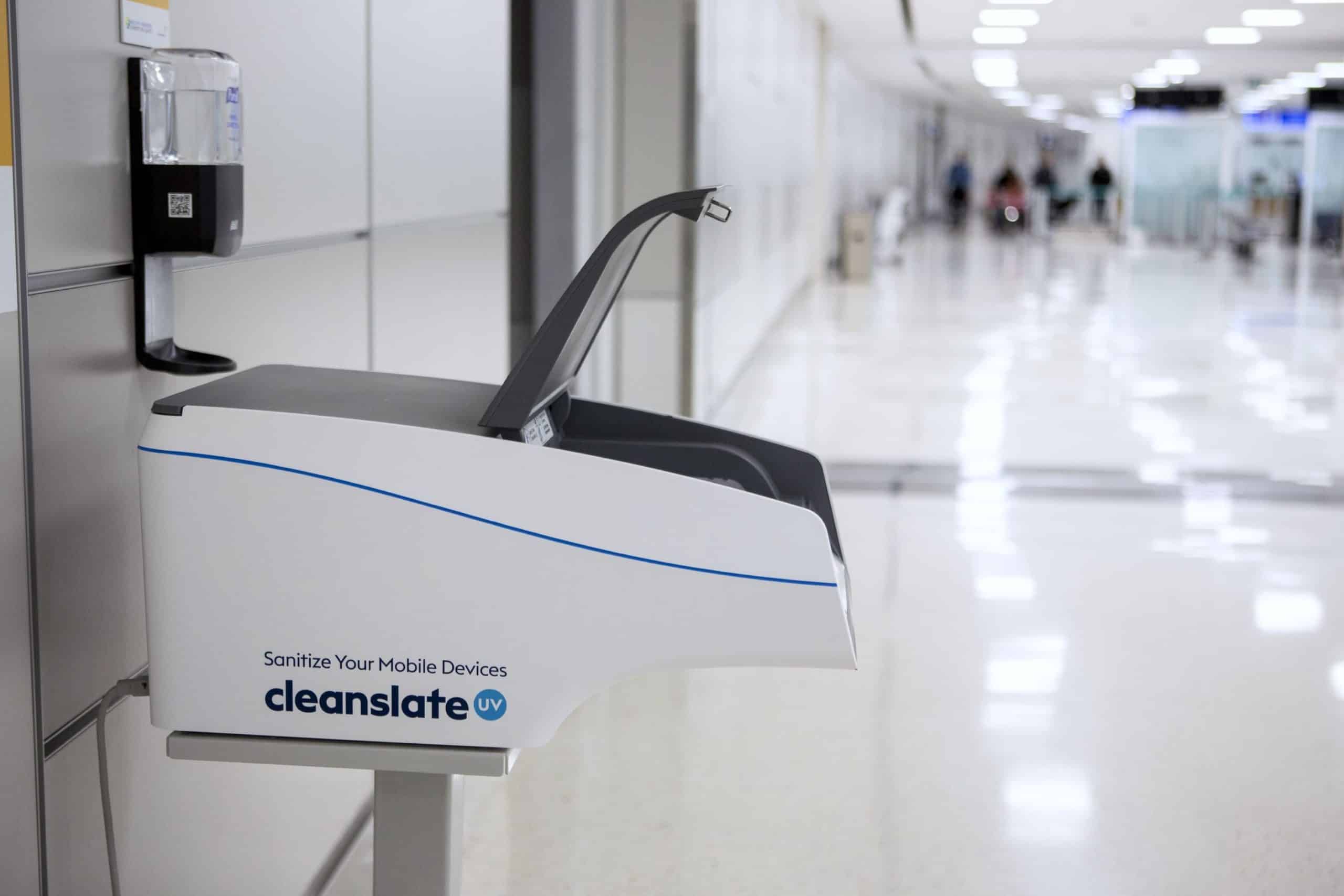Safe travel has a new meaning in a post-pandemic world. It no longer simply entails a security check or a reminder to ‘mind the gap’. Now, proper sanitization, masks and social distancing are all necessary and expected precautions. Even still, surfaces in public areas like train stations and airports can harbour some pretty nasty germs.
To determine how to best keep your facility, passengers and staff germ-free, we’ve compiled research detailing which surfaces are the dirtiest, what viruses are being carried and how to best prevent spread.
Most Contaminated Surfaces
Transportation hubs such as airports, train stations and subways become much “smarter” in the past decade. From self-check-in kiosks to smartphone charging stations, critical staff and passenger activities have become more efficient and tech-first.
However, these surfaces are often difficult to clean and can harbour dangerous viruses and bacteria. Unsurprisingly, scientific research shows the most contaminated surfaces are the highest touch areas1,2,3
- Passenger cell phones
- Payment terminals
- Luggage trays
- Shared children’s toys in the play area
- Handrails and armrests
- Self-use kiosk machines
- Water fountains
While this information may seem obvious, what was most shocking was some of the viruses found on these high-touch surfaces.
Viruses Found
Many studies have been conducted to determine which viruses live on the surfaces of transport facilities.
A 2018 study conducted across three major airports in the US found that one self-help kiosk contains over 1000x the bacterial load of an average toilet seat!2 Some viruses proven to be found on surfaces in airports are:1
1. Rhinovirus – the common cold
2. Coronavirus – a type of virus, similar to the cold, that infects your nose, sinuses and throat
3. Adenovirus – often associated with fevers, sore throats, bronchitis and pink eye
4. Influenza A – the flu
A study conducted by the CleanSlate UV team showed that one of the most contaminated surfaces lives in our pockets. Our team swabbed commonly touched surfaces throughout the Toronto subway to determine their bacterial load, including passengers’ cell phones.
Cell phones were the second most contaminated surface in public transit, bested only by the rubber grips on the passenger safety handles. The screen of the smartphone contained more bacteria than a metro card refill station, a subway pole and almost every type of passenger handle.3
What Can You Do to Prevent The Spread of Germs?
Fortunately, we are seeing an increasing number of hand sanitization stations and implementation of additional hygiene measures in transit hubs. Airports, train stations and subways can now be seen sanitizing their handrails regularly, offering gloves for self-help kiosks and switching to touchless payment methods.
Major airports and transit hubs around the world are combating the ongoing challenge of dirty, contaminated cell phones through the use of UV light. In particular, UV-C technology can be used to sanitize sensitive touchscreens, such as cell phones.
CleanSlate UV is a proud partner of many of these facilities. CleanSlate UV’s easy-to-use model, touch free device removal and versatility in placement makes it the perfect solution for transportation facilities of any size. One cycle in the CleanSlate UV is only 20 seconds, long enough to sanitize the phones but too short to cause any damage to the sensitive touch screens.
To learn more about how CleanSlate UV can fit into a transportation facility and how it seamlessly integrates into existing sanitization practices, please see our transportation page: https://cleanslateuv.com/transit/
To read more about CleanSlate’s study within the Toronto transit system, click here: https://cleanslateuv.com/post/what-are-the-dirtiest-surfaces-on-your-ttc-commute
2. InsuranceQuotes.com (2018)
3. https://cleanslateuv.com/post/what-are-the-dirtiest-surfaces-on-your-ttc-commute


